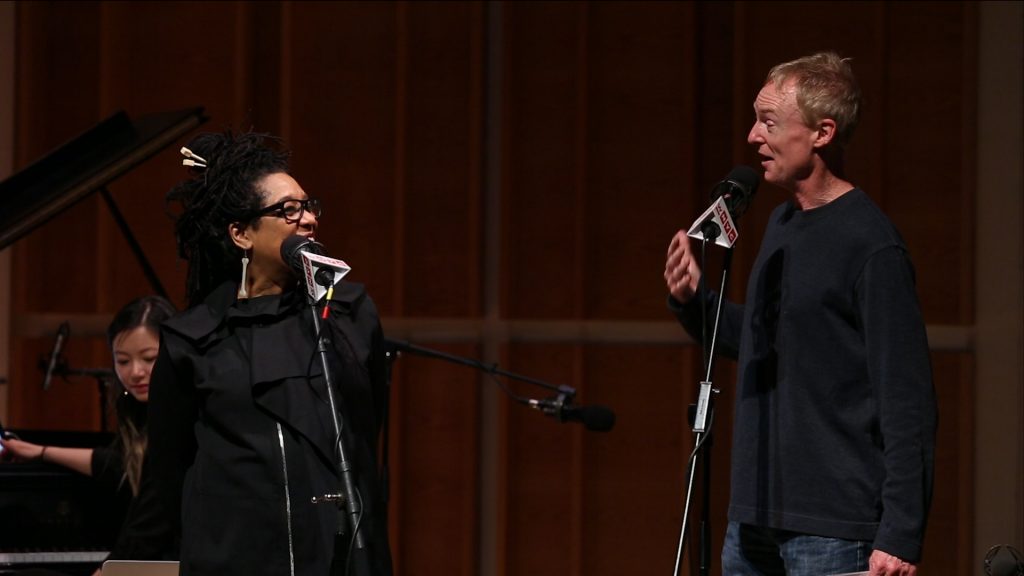
John Schaefer and composer Pamela Z at Merkin Hall for a New Sounds Live concert
Noncommercial public radio stations stretch the boundaries of classical music while honoring its living traditions and contemporary pioneers.
In 1913, the reception of The Rite of Spring, a ballet by the emerging Russian composer Igor Stravinsky, evoked such a vehement reaction that it caused what has been described as a “near-riot.”
A century or so later Stravinsky is a lynchpin of the contemporary repertory and Rite is one of the most recorded works in classical music.
Classical music doesn’t get quite that reaction these days. But there’s still a tendency in music programming to avoid new and progressive works, giving the perception that classical music isn’t evolving.
Public radio stations around the country, however, are going against the grain and working to change that perception.
WQXR, the powerhouse classical station of New York Public Radio, frequently features modern music. For example, music writer John Schaefer hosts New Sounds and has produced programs about:
- modernist composers Meredith Monk and Steve Reich
- the world’s first virtuoso toy piano player, Margaret Leng Tan
- singer and electronic composer Julianna Barwick; and
- the vocal group Roomful of Teeth
Schaefer describes his show as “a daily showcase of weird and wonderful music from artists, composers and traditional music—all gleefully oblivious of their genres.” New Sounds runs 24/7 on its own WQXR live stream.
Second Inversion, a 24-hour live stream service of KING Classical in Seattle, invites listeners to “rethink classical.”
“A second inversion,” explains Maggie Molloy, the stream’s editor, programmer, and one of its hosts, “is when you rearrange the notes in a chord to make the chord a little more ambitious. Maybe not as stable or predictable. More unusual.”
Second Inversion features many manifestations of modern experimentation, including dissonance, atonality, minimalism, microtonality and electronic music. Much of the music played would not sound out of place in a contemporary film score, commercial, or video game, and should be mainstream in thirty or forty years.
Pittsburgh noncommercial radio station WQED’s programming lineup includes Classical Crossroads, a podcast about how “classical music crosses paths with rock and roll, world music, folk music and jazz.” Shows include interviews with:
- Rasputina, a cello-driven rock band
- Police drummer Stewart Copeland, who’s played with the Pittsburgh Symphony
- The Piano Guys, a hybrid classical/contemporary/rock ‘n roll music group that became popular through its appearances on YouTube.
Illinois Public Media’s schedule has plenty of mainstream classical, but makes room for 20th and 21st century musicians and composers with features on air and online:
- Classics of the Phonograph which highlights recordings by 20th Century conductors, many of whom aren’t household names, such as Gennady Rozhdestvensky, a Soviet-era conductor who introduced modern music to the USSR.
- Classical Behind The Scenes is a six-part online documentary series about classical musicians and composers in central Illinois. These include University of Illinois professor Stephen Taylor, who has used his own technology to transform data sets (like DNA maps) into music, and composer/teacher/harpist Julia Kay Jamieson, who has taken modern harp music far from the tearoom.
These efforts won’t elicit the same reactions as the first performance of Rite, but they are helping classical musicians to be creative in the ways they evolve and meld the genre for generations to come.